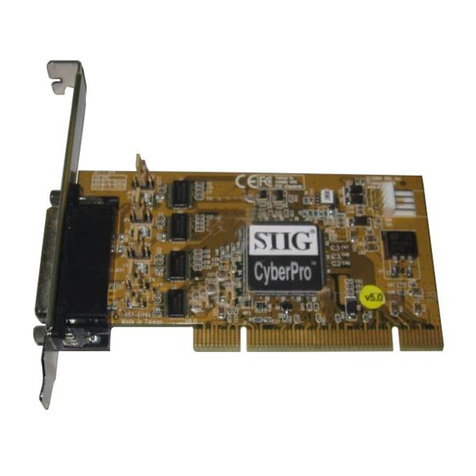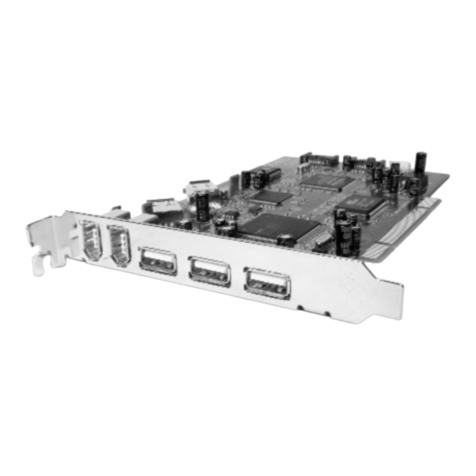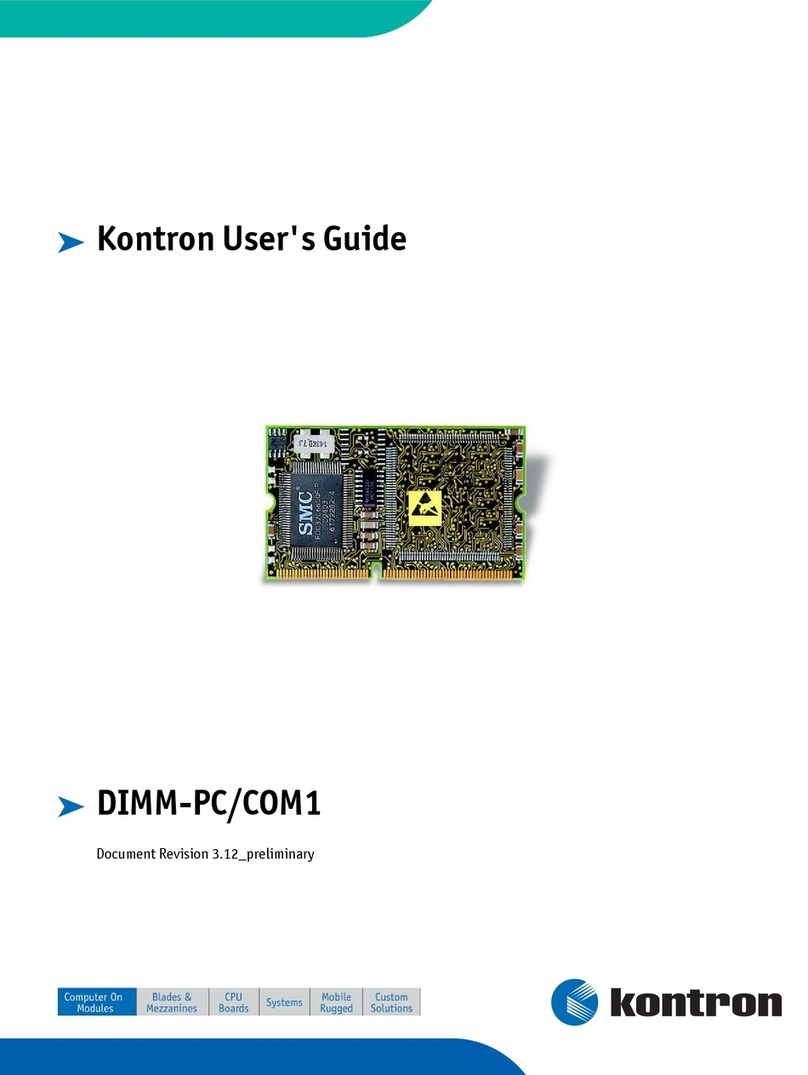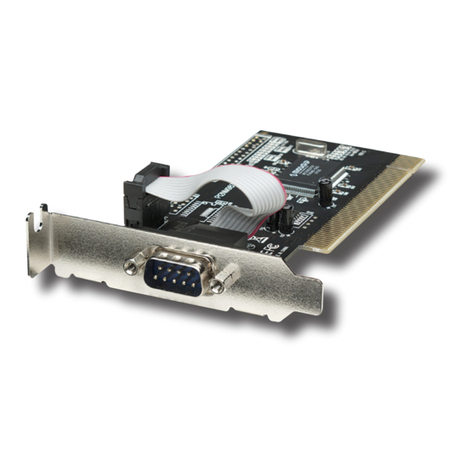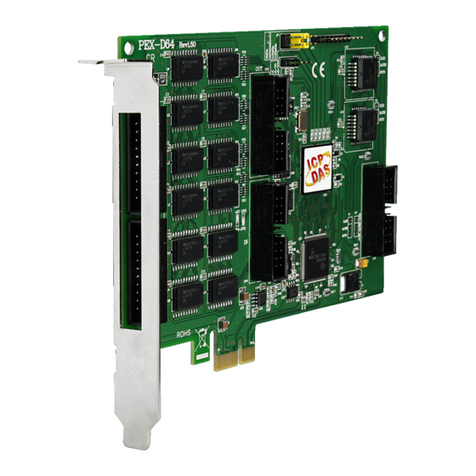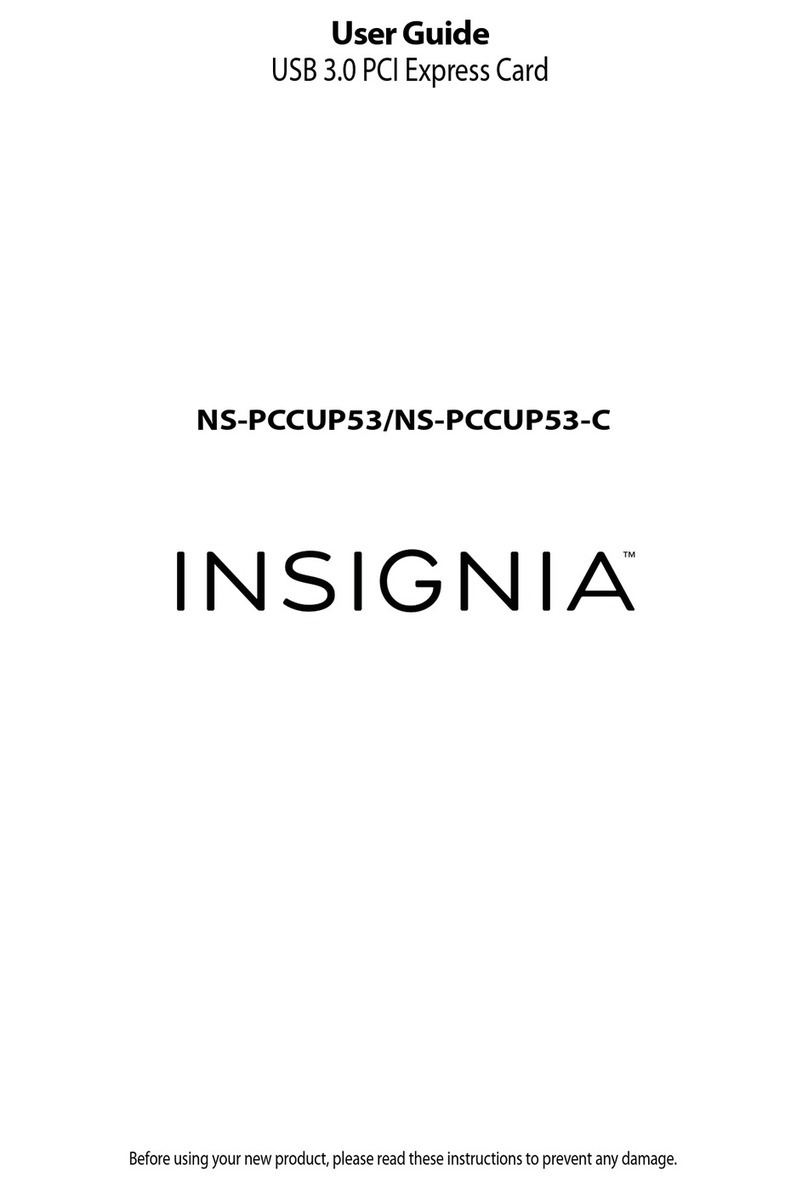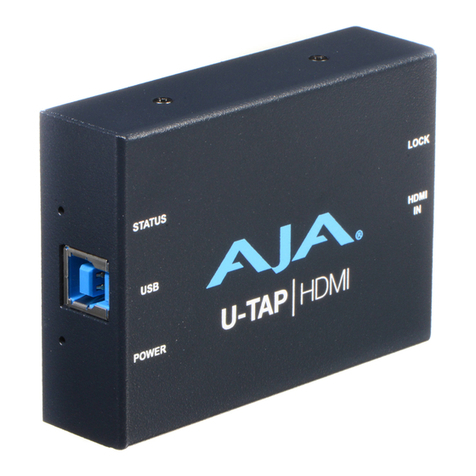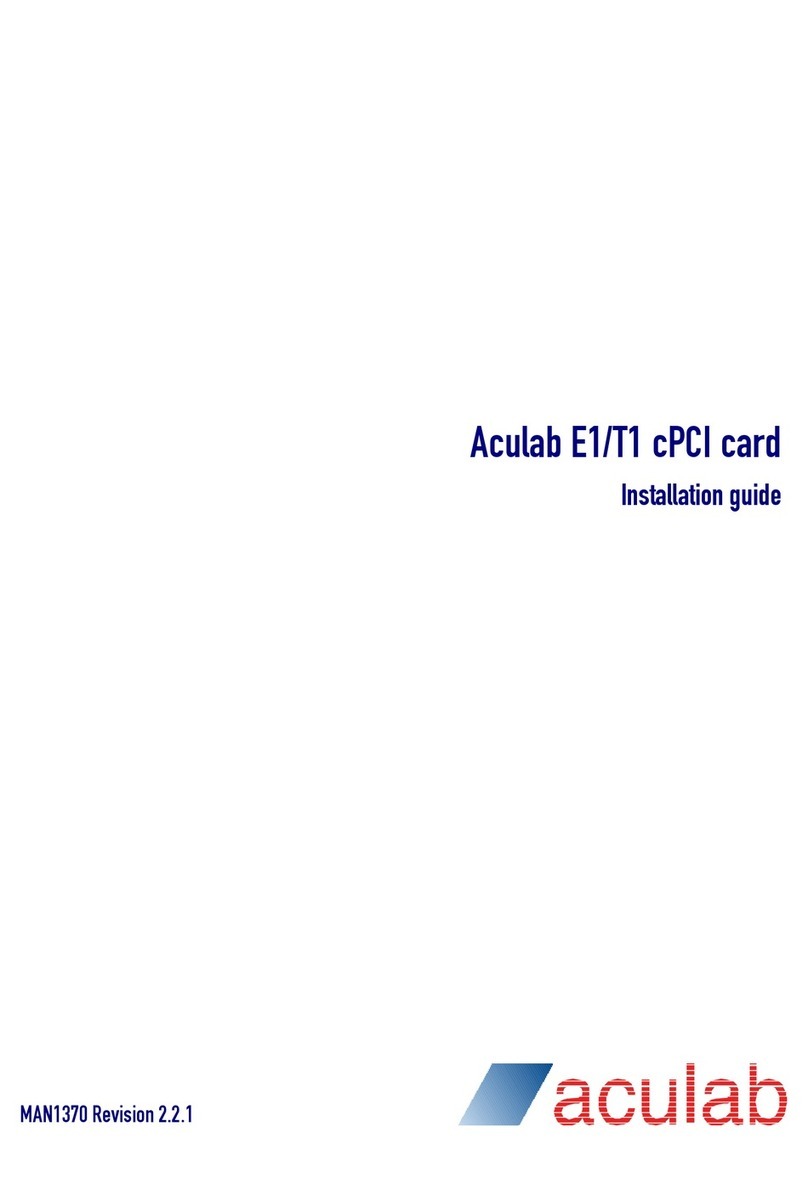DaytonAudio KABD Series User manual

KABD-230 / KABD-250 User Guide
The new Dayton Audio KABD series of boards leverages the convenience of Bluetooth 5.0 with aptX HD
streaming along with the powerful Analog Devices ADAU1701 DSP chip to allow for almost limitless
possibilities for sound customization and still have the convenience of high quality Bluetooth streaming.
Out of the box, basic customizations and volume control can be made by attaching the optional
potentiometers, but to unlock the full potential of your amplifier, attach an ICP1 or KPX programming
board to program your KABD amplifier with the SigmaStudio development tool from Analog Devices.
This allows for limitless possibilities of EQ, limiting, bass enhancement, delays and more.
This guide applies to the KABD-250 and KABD-230, which are 2-channel amplifiers that are identical in
function, with the KABD-250 being capable of 2x50 Watts, and the KABD-230 being capable of 2x30
Watts. The only visual difference between the two is a large round heatsink in the middle of the KABD-
250, and the KABD-230 does not have this heatsink.

Table of Contents
KABD-250/230 Visual Overview....................................................................................................................4
Quick Start and Wiring Guide .......................................................................................................................5
Before You Start........................................................................................................................................5
Power Supplies......................................................................................................................................5
Input Devices.........................................................................................................................................5
Speaker Output and Line Output..........................................................................................................6
Quick Start Steps.......................................................................................................................................6
Potentiometer Headers ..............................................................................................................................11
Potentiometer Port Configuration in SigmaStudio.................................................................................12
Using the Potentiometer Ports for Connecting Buttons or Switches .....................................................12
Sigma Studio Connection - Quick Start.......................................................................................................13
Default Register Configuration in SigmaStudio ..........................................................................................16
Writing to E2Prom –Burning Custom SigmaStudio Programs to Non-Volatile Memory...........................17
Example Projects for the KABD-250 and KABD-230 ...................................................................................19
Portable Bluetooth Speakers, Boomboxes .............................................................................................19
Desk Speakers .........................................................................................................................................19
Gaming/Arcade Machines, Kiosks or other commercial systems...........................................................20
Example SigmaStudio Projects................................................................................................................21
SigmaStudio Programming Guide...........................................................................................................21
KABD-250 Specifications.............................................................................................................................22
Electrical Specifications.......................................................................................................................22
Audio Specifications............................................................................................................................22
KABD-230 Specifications.............................................................................................................................23
Electrical Specifications.......................................................................................................................23
Audio Specifications............................................................................................................................23

What is new with the KABD amps compared to the DSPB series?
The DSPB series was the first generation of DSP amplifier boards from Dayton Audio, and the KABD
series builds on the success of that series by adding new features such as Bluetooth 5.0.
1. Potentiometers have been removed from the board, and replaced with 3-pin JST ports. In the
optional cable pack for the KABD series, there are 4 potentiometers with cables to connect
directly to these ports, no soldering required. This allows for convenient external volume
controls, filter controls and more. It also allows easy access to multipurpose pins of the
ADAU1701 for other purposes.
2. Bluetooth 5.0 with AptX HD streaming. High quality Bluetooth streaming is now built right onto
the board. Example projects have been updated accordingly to use this input. If your
SigmaStudio project is not setup correctly, you will not hear any input when connected with
Bluetooth.
3. 4 Channels of amplification! Perfect for making a stereo pair of 2-way active speakers, both of
the new 4 channel amplifiers use the BT 5.0 module w/aptX HD, and also allow for external
potentiometers. The boards can also be configured into 2.1 mode, or higher powered 2.0 mode.
Each board is smaller than a typical passive 2-way crossover, yet you get amplification, DSP and
Bluetooth built in with no passive crossovers required. Make a crossover with DSP instead!
a) The KABD-430 will allow for 4 x 30 Watt channels of DSP and amplification in the same
compact size as any previous KAB or DSPB amplifier. Configurable as 4x30W,
2x30W+1x60W, or 2x60W.
b) The KABD-4100 is a larger board, but allows for up to 4 x 100 Watts of DSP and
amplification! Configurable as 4x100W, 2x100W + 1x200W, or 2x200W. This amplifier
can also be cascaded with a second KABD-4100 for up to 8 channels of amplification.
4. Because of the addition of a built in 5.0 Bluetooth chip in the KABD series, it is not
recommended to use the KABD in combination with a KAB for additional outputs in the same
way as the DSPB+KAB. It is recommended to use a KABD-4100 or KABD-430 instead for this
purpose.
a) These additional line outputs are still accessible via J7 on the KABD-250. A 6-pin cable
mates to this connector, and can be found in the optional cable pack, and can be easily
be soldered to your choice of 3.5mm jacks, RCA jacks or directly to another amplifier for
creating something like a SUB OUT jack, line output passthrough, etc.
What is the difference between a KABD amp and a KAB amp?
Dayton Audio’s original line of amplifier boards is the KAB line, which have had numerous generations
but always included class D amplification optimized for portable use and Bluetooth streaming.
Compared to the KAB series, the KABD series of amps all include a dedicated DSP chip called the Analog
Device’s ADAU1701, which allows for connection to SigmaStudio and incredibly flexible DSP
configuration such as on-the-fly tone controls, advanced bass processing, delays, etc. The previous
DSPB series of amplifiers also employed this ADAU1701 DSP module, however it lacked Bluetooth
support. The KABD series is like a combination of the KAB and DSPB series. The newest generation of
KAB amplifiers employ the same Bluetooth 5.0 chips with aptX streaming and very similar connections,
and for the first time, this generation of KAB also includes basic EQ capability with the KPX programmer
(however it is not nearly as powerful or flexible as the ADAU1701).

KABD-250/230 Visual Overview
The amplifier pictured is a KABD-250, however everything is the same on the KABD-230. The KABD-230
does not have a circular black heatsink like the KABD-250.
-The location of the port name on the image below represents where pin 1 of that port is. J9 is on
the left side of the Line In port below because that is where pin 1 is.

Quick Start and Wiring Guide
Before You Start
•Make sure that any speakers and input devices you plan on connecting to the KABD are working
properly.
•If using SigmaStudio to use the full potential of the DSP, make sure you have purchased at least
one programmer board (ICP1 or KPX), an appropriate USB cable capable of data transfer and
make sure you have a Windows PC available to use for Analog Devices’ free SigmaStudio
software.
•Take care when attaching and especially removing jumper cables from the KABD.
oA damaged cable can cause issues that are difficult to troubleshoot, such as noises like
popping or clicking. A damaged cable can also cause programming failure.
•Note that there is a ‘tips and troubleshooting’ section at the bottom of this document.
•This guide will frequently reference ports on the amplifier such as “J8” or “J6”. These markings
are written on the board itself in small print and are usually easy to find, but if unsure, reference
the quick start wiring diagram below.
•This guide is for the KABD-250/230 amplifiers, which have a built in Analog Devices ADAU1701
signal processing chip. The normal KAB (without the D at the end) amplifiers do not have this
chip, and this user guide does not apply to these boards.
•There are separate manuals for the KABD-4100 and KABD-430, which are 4 channel amplifiers.
This manual is for the 2 channel KABD amplifiers, which are the KABD-250 (2 x 50 Watt) and
KABD-230 (2 x 30 Watt)
Power Supplies
•DC Power - The KABD-250/230 can be powered via J8 a DC power supply from 12-24V with
current capabilities greater than 1A. Any power supply outside of this specification can
damage the KABD-250/230 . In general, the higher wattage the power supply, the more
power that can be supplied to your speaker. For maximum power, use a 24V, 5A DC power
supply.
•Battery Power - The KABD-250/230 can also be easily powered with an external Dayton
Audio battery board via J6. The KABD-250/230 does NOT have a battery charging circuit on
the board, so the attached battery board must have this built in. Dayton Audio battery
boards such as the LBB-3v2 (12V) or LBB-5Sv2 (21V) will work with any KABD series
amplifier. Battery modules such as the Dayton Audio KAB-BE are not compatible with the
KABD series because these battery modules do not have built in charging circuits (amplifiers
such as the KAB-250v4 have charging circuits on the board, but the KABD-250/230 does not
have this circuit on the board).
Input Devices
•Bluetooth - The KABD-250/230 has Bluetooth 5.0 built directly onto the board wired directly
to the ADAU1701 DSP chip via I2S. This supports apt-X, aptX-HD, apt-X LL, SBC and AAC.
•Analog - Analog audio sources can be input to the KABD-250/230 via J9. A 3.5mm aux-in
cable is available in the KABD-SPF function cables kit for the KABD series.
oDo not use input voltages higher than 2V or audio performance will reduce.

•Mixing - By default, input from I2S (Bluetooth) and J9 (analog) are mixed together within the
DSP before being sent for amplification. This allows for a smooth transition between aux
and Bluetooth without the user needing to touch the speaker/amplifier. This can be
reprogrammed via a custom SigmaStudio project. For example, you might use a switch to
change between Bluetooth and AUX (analog). See the example projects pack for an
example.
Speaker Output and Line Output
•Speaker Output - The KABD-250/230 speaker output (via J10) is stable down to 4ohm, which
means it can power almost any speaker. This also means it can power any impedance of
speaker greater than 4ohm, however the efficiency will go down as the impedance goes up.
Do not bridge J10, the KABD-250/230 is not intended to be bridged.
•Line output - The ADAU1701 DSP is capable of 4 channels of analog output with DSP
applied. 2 of these channels are connected to the amplifier chip (DAC0 and DAC1 in
SigmaStudio), and the extra 2 channels can be accessed as a line level output via J7 (DAC2,
DAC3 in SigmaStudio).
oThis port was designed to make it easily cascadable with similar amplifiers, but a
line output jack could be simply wired to J7 as well. The optional functional cable
pack comes with a 6 pin-6 pin JST cable, which could be cut in half and wired to a
3.5mm or RCA jacks
Quick Start Steps
1.
Speaker Connection
Connect speakers to J10 with the provided 4-wire
harness according to the wiring diagram or by
following the labels on the back side of the board. The
ends of included wiring harness comes pre-loaded
with solder to quickly connect to your driver / speaker.
Do not let wires touch while the amplifier is on. Attach
the wiring harness to your speakers before connecting
to your KABD.
The KABD is suitable for powering speakers and
drivers with impedances from 4 Ohms to 8 Ohms.

2.
Power Options
Connect power through either J8 (4) if using a power
adapter or J6 (5) if using a Dayton Audio battery
board.
a. It is recommended to use a power supply of
at least 12V but less than or equal to 24V.
The higher the voltage input (with adequate
current capabilities), the more power the
amplifier can supply to your speakers. Power
supplies out of this range can damage the
amplifier.
b. The KABD-250/230 does not have a built-in
battery charging circuit, so a battery board
such as LBB-3v2 (12V) or LBB-5Sv2 (21V)
that has a charging protection circuit built
in is required to use the amplifier with
batteries. If you are familiar with the KAB
series from Dayton Audio, these boards
include a battery charging circuit on the
amplifier itself, thus the battery boards do
not need to contain a charging circuit, but
the KABD series need this circuit on the
battery board itself.
c. Connect a 2.5mm or 2.1mm DC jack to J9 to
allow a variety of power supplies to be
attached to the KABD-250.
3.
Bluetooth Pairing Switch
A Bluetooth pairing switch (green) that comes in the
box can be added to the KABD by attaching its 2 pin
connector to the corresponding port (J3). See the
quick start diagram or look for the “BT Pair” port as
labelled on the underside of the board.
Holding this button down for about a second will allow
a new device to be paired to the KABD and will
disconnect the old device. Do not hold this button for
longer than 5 seconds. Use this button if you are not
seeing “DAKAB” in your Bluetooth list.
Note: Only use momentary switches for the BT pairing
port.

4.
Bluetooth Connection
Once powered on, the board’s Bluetooth connection
will be available on your phone, tablet, laptop, etc and
will show as “DAKAB” in your Bluetooth menu. Once
connected and music is playing on the source device,
audio should begin playing through your connected
speakers.
Troubleshooting
1. Check that your audio source is functioning
correctly and connected to the KABD’s
Bluetooth.
2. Check that your speaker connections match
the diagram on the underside of the KABD.
3. If you had an ICP programmer attached to the
KABD when the KABD was turned on, detach
it and reboot your KABD.
a. Unpair and repair the KABD
Bluetooth connection to your phone
or other source device.
5.
Signal/BT LED Connection
(Optional)
Bluetooth and Signal/Status LEDs found in the
functional cable kit can be added to the KABD by
plugging them into the corresponding 2-pin
connectors on the board. J11 is used for the Signal
LED, and J1 for the Bluetooth LED.
The Bluetooth LED will blink while searching for a
device, but will be solid when a device is connected.
The Signal LED will be solid when a signal is detected,
however the LED will turn off if a signal has not been
detected for 5 minutes, and the device will enter a low
power standby mode.

6.
Input Jack
(Optional)
A 3.5mm jack comes included in the functional cable
pack with attached 5 pin connector, which can be
plugged into J9 to function as a line input for external
audio sources.
This wiring harness could be modified by snipping off
the 3.5mm jack, and soldering stereo RCA jacks to the
cables according to the pinout on the back of the
board or on the chart to the right.
7.
Standby Switch
(Optional)
Included in the functional cable kit is a switch wired to
a 2-pin connector that can be used as a standby
switch. It should be attached to the appropriate pins
of the KABD-250/230’s J12 header (STBY and GND)
as shown on the right.
Note: You will notice this port has 3 pins but we only
use 2 pins, with the extra pin being “mute”. This port
could be used to sync the standby/mute of the KABD
amp with another Dayton Audio amplifier, but we do
not need the mute sync when the board is used
standalone. Instead we use the port to control
standby mode with a switch.
8.
Potentiometers
(Optional)
Attaching the potentiometers found in the functional
cable kit (sold separately) to the board in the 3-pin
POT1-4 ports can allow quick on-the-fly adjustments,
even without any programming. See the
potentiometers section for more details. POT1 can
immediately be used out of the box as an external
volume control.
Numerous SigmaStudio example projects are available
to reprogram the potentiometers for custom uses,
such as EQ tone controls, high/low pass filters, custom
volume controls, etc and can be easily customized.

9.
Bluetooth Antenna
(Optional)
Attaching the external Bluetooth antenna in the
function cable kit can be helpful when the KABD is
installed in situations where more range is needed, or
if the Bluetooth signal is restricted, such as in a metal
case.
10.
Line Output (2 Channels)
(Optional)
Because the ADAU1701 has 4 DAC (analog) outputs,
and only 2 of them are used for the powered outputs
via J10, the other 2 are available via J7. These can be
wired to 3.5mm jacks, RCA jacks, or even connected
directly to another amplifier, and you can even apply
full DSP algorithms to these outputs via SigmaStudio.
For example, you could wire an RCA jack to this output
and use it as a line level DSP’d “sub out” and connect
your project to a powered subwoofer. You could also
use the KABD-250/230 to power tweeters in a 2-way
system, and then use this output jack to connect a
more powerful external amplifier that powers the
woofers.
11.
Programmer Connection
(Optional, but highly recommended)
Connecting a compatible programmer (Dayton Audio
ICP1 or KPX) will allow you to connect the KABD’s DSP
chip to your PC, allowing you to create advanced DSP
programs. This connection is temporary, and the
programmer can be removed when finished. See the
“SigmaStudio Connection” section of this document
for more details.

Potentiometer Headers
The KABD series of amplifiers come with four headers to make it easy to add external potentiometers, button,
switches or rotary encoders to your project. Each of these 3-pin headers expose a voltage supply, GND, and a
multipurpose pin of the ADAU1701. The optional cable pack for the KABD series comes with 4 potentiometers
with cables that connect directly to these ports, so no soldering is required and they are easy to add to your
project. The ports for these potentiometers are 3-pin JST headers and are clearly labelled as POT1-4. The
potentiometers in the cable pack are 1k Ohm. Buttons or switches can also be easily attached to these ports and
should connect to Pin 1 (GND) and Pin 2 (MP#) as labelled above and the corresponding multipurpose pin must be
configured as “Input GPIO Debounce” as seen on the next page.
Out of the box, each KABD amplifier is pre-programmed for the potentiomers to have some basic functions,
however there are numerous example projects for most other use cases and can be easily customized with
SigmaStudio. A chart of the default potentiometer functions is below.
For instruction on how to use potentiometers or buttons/switches in SigmaStudio projects, see the “SigmaStudio
for the KABD series” guide for detailed information.
Note: If the potentiometers for making on-the-fly adjustments, the potentiometers must be left plugged in for the
changes to remain active. For example, if you use POT3 to enable a high pass filter on your speaker outputs, you
must leave that potentiometer plugged in for the HPF to remain active. When you remove the potentiomers, the
HPF will deactivate. If you do not want to leave the potentiometers plugged in for something like a high pass filter,
you need to reprogram the board via SigmaStudio with your custom configuration.

Potentiometer Port Configuration in SigmaStudio
There is some configuration within SigmaStudio required so the ADAU1701 knows to interpret each
multipurpose (MP) pin as a potentiometer input or button/switch input. Simply open the hardware
configuration menu, then select the “IC 1 – 170x\140x Register Control” tab. Configure the MP pin that
corresponds to your potentiometer header to “Input GPIO Debounce” for a button/switch, or “ADCX”
for a potentiometer. (POT4 will actually be represented as ADC0, not ADC4).
Any example project from Dayton Audio that you use will already have this preconfigured.
Using the Potentiometer Ports for Connecting Buttons or Switches
The 4 potentiometer ports on the boards are optimized for potentiometers, however they can be easily
used to instead connect buttons or switches to the ADAU1701, as they expose 4 of the multipurpose
pins of the ADAU1701. Simply connect your switch to the GND and MP pin of the desired potentiometer
port (Pin 1 and Pin 2 on the diagram below). Even though these are 3 pin headers, the 2-pin connector
that comes attached to the LEDs, Bluetooth pairing button, etc will also fit, just not perfectly. There is a
switch that comes in the optional KABD cable pack pre-wired to a 2-pin connector.

Sigma Studio Connection - Quick Start
A DSPB-ICP1 or KPX (USBi) programmer board is required to program the DSP chip on KABD amplifiers.
The programmer can be thought as the bridge between the DSP chip and the computer. The
programming board translates instructions from the computer controlling SigmaStudio into a signal that
the KABD’s ADUA1701 can understand. The programmer only needs to be connected while the device is
being programmed. After programming, it can be removed and used to program as many other KABD
amplifier boards as needed.
Note that a comprehensive SigmaStudio Programming Guide for the whole KABD series is available
wherever you found this document (the product page for the KABD-250 or KABD-230) this section is
merely to get you started with / connected to SigmaStudio. For detailed usage, read the guide
mentioned above, which is intended as a learning document that goes over all details needed to make
custom projects such as input routing, output routing, bass algorithms, PEQ, controllable filters with
potentiometers, presets switchable with a toggle switch, etc.

The following steps make it easy to connect your programmer to the SigmaStudio development tool,
and then your programmer to your KABD amplifier. The steps require a basic knowledge of computer
operation, but if the steps are followed closely, it is not too complicated. Please complete these steps in
this order for consistent connection. Refer to the graphic above
Note: Sigma Studio connection requires a Windows PC and an ICP1 or KPX programming board.
1. Download and install the most recent version of SigmaStudio to your system for free.
2. Make sure your ICP1 or KPX is disconnected from USB and from your KABD amplifier before
starting, to ensure the proper steps are taken.
3. Open an example project from downloadable from the Parts Express product page for the KABD-
250 or KABD-230.
4. If starting a project from scratch (not recommended), open a new project in SigmaStudio by
pressing File->New Project. We recommend using an example project and modifying it for your
needs at least for the first time you re-program a KABD amplifier to make sure everything is
working correctly.
5. Ensure that your ICP1 or KPX is not yet connected to the KABD. Set the switches on your ICP1 or
KPX appropriately for programming the KABD.
a. KPX –Set the switches on your KPX are set to “USBi” and “IIC” for proper programming
with the KABD.
b. ICP1 –Set the only switch on your ICP1 to “PROGRAM” mode
6. Plug an appropriate USB cable into your programmer (micro USB cable for ICP1, USB C cable for
KPX) into the PC running SigmaStudio, and then connect that USB cable to your programmer. Do
not connect the 6-pin cable into your programmer until after you have connected the USB cable.
7. If all is correct, you will see the USB block turn green, like below.
a. Note that this block turning green means that SigmaStudio recognizes your
programmer, it does not indicate that SigmaStudio can communicate with your KABD
amplifier yet.
b. If the connection is not successful (the block stays orange),
i. Disconnect all cables from the KPX / ICP1 (6-pin cable, 4-pin cable), and then
plug in the USB cable to the KPX / ICP1.
ii. it is important to try a different USB cable, even if it’s a “good cable”. Many USB
cables endure a lot of abuse from charging devices, and although they might still
provide power, they might have issues transferring data. Some micro USB cables
might not have been wired internally to transfer data at all, and only have
power wires internally.

iii. It could be a driver problem that can be resolved by reinstalling SigmaStudio,
using a different USB port, manually uninstalling the driver from Device
Manager and then reconnecting the ICP1 / KPX.
iv. If possible, try connecting to another PC with a fresh install of SigmaStudio. If it
connects, you know it is a problem with the drivers or USB port on your original
PC. If it does not work, you know that it has to do with your USB cable or your
programmer.
8. If not already, make sure your KABD is now connected to its own power source via J6 or J8.
a. If the PC connected programmer is plugged into the KABD, but your KABD does not
have its own power, it will light up LEDs on the KABD (making the amplifier look like it is
powered), but it will fail to program and function. The KABD needs to be connected to
its own power source for proper programming.
9. Plug the 6-pin connector on the ICP1 or KPX programmer to the 6-pin programming port on the
KABD amplifier (J5). Your programmer comes with this 6-pin cable. Make sure that you
connected your programmer via USB to your PC BEFORE completing this step.
a. Note: The KPX has two ports, but you will use the 6-pin port for programming the KABD
series of amps.
10. You are now almost ready to make your own projects in SigmaStudio or to use example projects
and modify them for your purpose. if you are making your own project rather than basing it on
an example project, some additional register configuration is required for proper function of the
Bluetooth input and also for external potentiometer usage. For most users, is recommended to
start with a KABD example project, and modify it rather than trying to setup the registers
yourself.

Default Register Configuration in SigmaStudio
These are the default register settings for a KABD-250 or KABD-230 (and the entire KABD series). It is
setup for proper I2S settings for Bluetooth Input, and also sets up the 4 POT ports for potentiometers (if
using switches, see other section). MP2, MP3, MP8 and MP9 need to be set to ADC for usage with
potentiometers. These could be set up as “Input GPIO debounce” if using buttons or switches.
If using an example project for the KABD, this will already be configured for you. If upgrading from an
older DSPB project or creating a project from scratch, make sure your register settings match the screen
below. If unsure, modify an example project to suit your project’s needs rather than starting from
scratch.

Writing to E2Prom –Burning Custom SigmaStudio
Programs to Non-Volatile Memory
This step writes your custom program to non-volatile memory on the KABD amplifier. This means that
the program will be retained on the KABD even after it has been powered off and then back on again.
This can be reprogrammed as many times as needed. When you are programming via SigmaStudio and
making changes on the fly, the program is only stored in TEMPORARY memory. It is not until you write
the program to E2Prom that your custom program can be reprogrammed to the DSP as the board turns
on. If you find that your custom program is lost on a power cycle, it means you have not written the
program to E2Prom.
IMPORTANT –This step will erase the stock configuration of the board! This means that the default
functions of POT1-4 will be reprogrammed or removed, depending on the custom SigmaStudio project
that is burned. See the project pack for original firmware for the KABD-250 or KABD-230.
1. This guide assumes that you have successfully re-programmed your board with a custom
program using the ‘link compile download’ button , and you are ready to burn it to the
E2Prom memory (it can be rewritten as many times as desired).
2. Right click your “ADAU1701” block and click “Write Latest Compilation to E2PROM”. This means
it will burn the latest program you have compiled to E2Prom. This means the program that was
configured the last time you pressed “Link Compile Download” or just “Link Compile Connect”. If
this option is greyed out, it means you need to press Link Compile Download and run a program
on your KABD first.
3. In the window that opens, make sure the settings match what is in the screenshot below (they
are the default settings), and press OK.
a. NOTE: Your programmer’s switch(es) need to be set properly for this step to work.
i. The ICP1 switch’s position must be set to “PROGRAM”
ii. The KPX’s switches must be set to “USBi” and “IIC”.

4. The program should now be written to E2PROM after it finishes programming. This means you
can remove your programmer from the KABD, and your program should remain programmed on
the board after power cycling the KABD.

Project Examples for the KABD-250 and KABD-230
Below are some examples of how the KABD-250 or KABD-230 could be used. Download the SigmaStudio
programming guide for the KABD series and the project pack found on the product page of the KABD-
230 or KABD-250 for details about how the necessary DSP programming can be achieved to achieve
these projects.
Portable Bluetooth Speakers, Boomboxes
The KABD series of amplifiers are optimal for portable and or battery powered speaker projects. This is
for many reasons.
1) Efficient class D amplification that minimizes the amount of power needed to drive your
speakers.
2) Bluetooth 5.0 with high quality aptX HD streaming
3) A Battery Input Port (J6) that matches the ports of the LBB series battery boards from Dayton
Audio, the LBB-3v2 (12V) or LBB-5Sv2 (21V) for easy, portable power. Using a Dayton Audio
battery board takes the uncertainty out of how to use batteries for projects.
4) Automatic power saving operation that drops power consumption to 105mW when a signal is
not detected. This ensures minimal power draw even when the speaker is accidently left turned
on.
5) DSP optimization of drivers. This includes things like -
a. Optimizing the bass output of small drivers
b. Protecting the drivers with infrasonic (high pass) filters, limiters, bass control, etc
c. Preset modes or potentiometer filter controls for on-the-fly adjustments to the sound of
your speaker. For example, more treble might be desired if a portable speaker is placed
on the ground away from ear level, or in an outdoor environment. However, if this same
speaker is placed on a coffee table in front of the listeners, less treble might be
required.
Desk Speakers
Desk speakers of all kinds can be made with the KABD-250 or KABD-230
1) Stereo Pair of full Range Drivers Optimized with DSP –Many full range drivers can be greatly
improved if the frequency response is optimized with DSP. This could include things such as
selective bass boosts, treble boosts, or even just precise filters to correct other errors in
frequency response. A full range driver will usually not sound as good as a pair of 2-way
speakers with a properly designed crossover, however for many situations and listeners they can
sound more than acceptable. You could also use the line output capability of the KABD
amplifiers to connect a powered subwoofer to get the low end that many full range drivers can
lack.
2) Retrofitting an existing pair of desk speakers to have built in amplification and optimization with
DSP. For example, you might have an old pair of 2-way speakers that already have crossovers
built in. By adding a KABD-250/230 inside of the cabinet of one of them, you can remove the
need for an external amplifier taking up precious real estate on your desk, and you can even
optimize the sound of your original speakers with DSP, add Bluetooth or presets such as a ‘night
mode’ that has reduced bass to not disturb sleeping family or roommates. You could also use

the line output capability of the KABD amplifiers to connect a powered subwoofer, and even add
some room EQ to the subwoofer.
3) For creating 2-way speakers with active crossovers, a 4 channel amplifier such as the KABD-4100
or KABD-430 is better suited for this type of project because 4 channels can power a stereo pair
of tweeters and woofers, but a 2 channel KABD only has 2 powered outputs.
Gaming/Arcade Machines, Kiosks or other commercial systems.
The KABD-250 or KABD-230 is an excellent choice for adding audio to systems of all kinds used for
commercial purposes. Wherever there are speakers, there needs to be an amplifier. And the KABD
series brings amplification, Bluetooth and DSP in one compact and easy to integrate package. The
integrated DSP allows for tweaking the sound to completely suit the unique needs of a big project, and
features like programmable external potentiometers and plug and play wiring harnesses bring incredible
customization possibilities.
Utilizing the DSP in a commercial environment can be beneficial in many ways. For example, if we
wanted to make an arcade machine with great audio to really pull the gamer into the game. We could
use a pair of high quality full range speakers built into the cabinetry of the machine, and then optimize
the sound of those speakers and also efficiently power them with a KABD-250 or KABD-230. With DSP
integrated into your arcade machine, you can fully optimize full range drivers, which most need to
sounds their best when used by themselves. It can be especially important in noisy environments, like
most commercial settings are. Optimizations might include a high pass filter to ease the load on a full
range driver, a small bass boost in the high bass region to increase perception of bass, a limiter to
protect the drivers, a treble boost to compete with other noise sources, or even different presets with
the flick of a switch or turn of a dial for different situations.
This manual suits for next models
2
Table of contents
Popular PCI Card manuals by other brands

Promise
Promise FastTrak TX4310 user manual
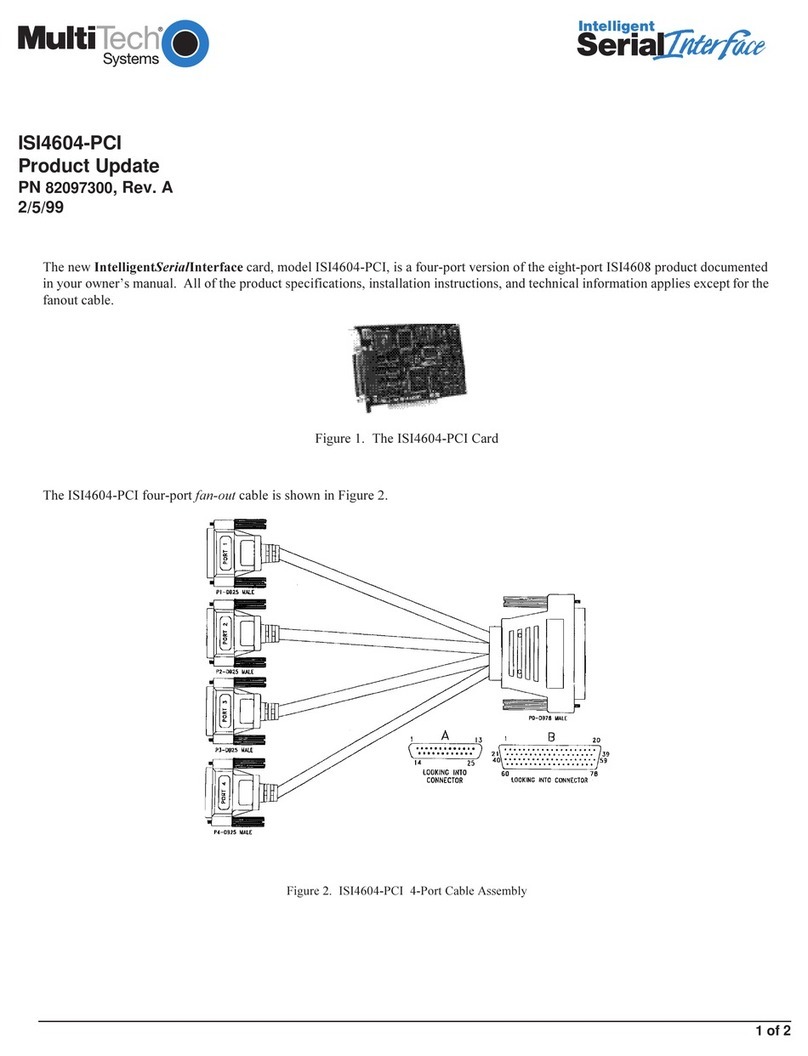
Multitech
Multitech ISI4604-PCI Product update

Global American Inc.
Global American Inc. 1507603 Quick reference guide
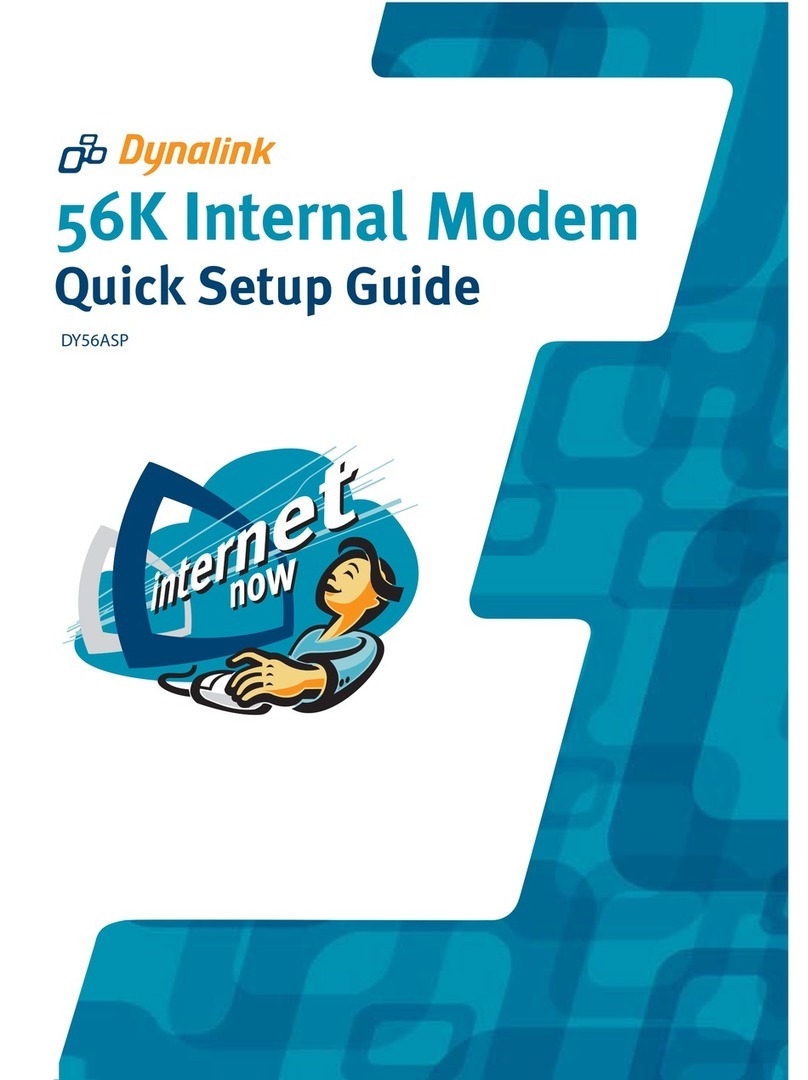
Dynalink
Dynalink DY56ASP Quick setup guide
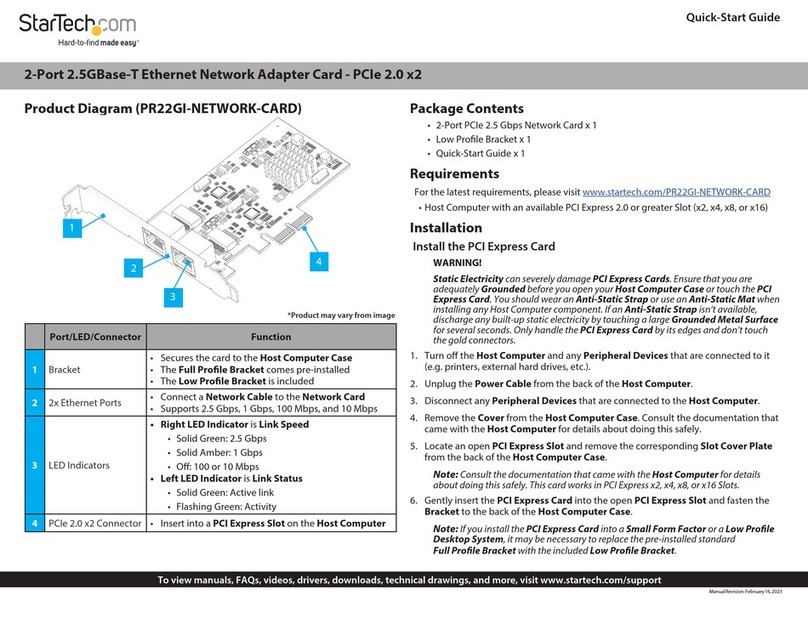
StarTech.com
StarTech.com PR22GI-NETWORK-CARD quick start guide

StarTech.com
StarTech.com PEXESATA2 instruction manual

